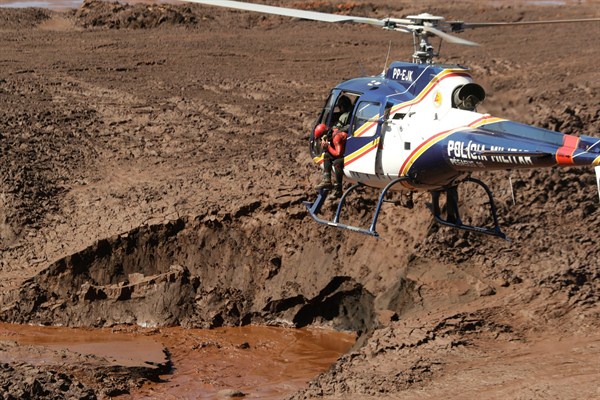The death toll continues to rise in southern Brazil after the collapse of a tailings dam at a mine last month triggered a massive mudslide. In what is being called the country’s worst environmental disaster, 134 people have been confirmed dead and another 199 are still missing in the nearby town of Brumadinho, in Minas Gerais state. Five people have been arrested as part of an investigation into the collapse, and a Brazilian court ordered the mine’s operator, Vale S.A., to stop using eight other tailings dams, which are constructed out of the waste materials left over from mining operations. In an interview with WPR, Bruno Milanez, an associate professor of industrial engineering at Juiz de Fora Federal University in Minas Gerais, discusses the political power of Brazil’s mining sector and the lax oversight that allowed this disaster to happen.
World Politics Review: How extensive are the problems associated with safety protocols at Brazilian mines? What are the chances that another disaster like the one at Brumadinho will occur again in the near future?
Bruno Milanez: While it is very hard to estimate the likelihood of a new disaster, recent history can offer some clues. Between 2001 and 2019, there were eight dam failures in the mineral-rich state of Minas Gerais alone. This represents an average of nearly one failure every two years. By way of comparison, an independent panel formed to evaluate the 2014 failure of the Mount Polley dam in British Columbia, Canada, estimated there would be a dam failure in that province every five years, on average. British Columbia’s mining safety legislation is lax by Canadian standards, but even so, Minas Gerais’ mines are twice as precarious.

